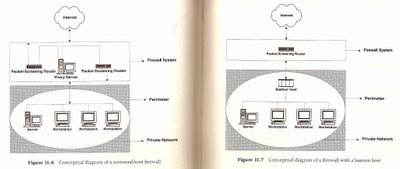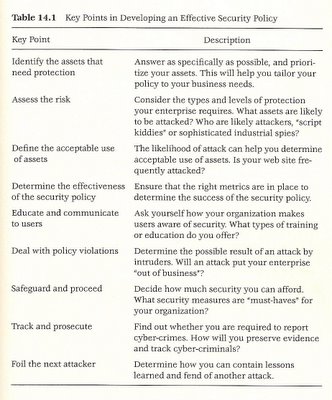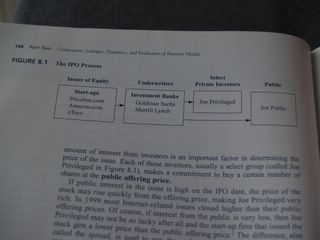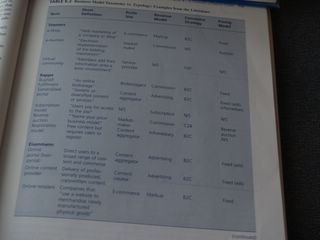
Monday, January 02, 2006
Monday, December 19, 2005
Establish SLAs Requires Steps
Thursday, August 04, 2005
LEB 312 - Week 1
• What is the nature and purpose of strategic transformation?
• Using an example:
• Explain the Impact of transformation change on a business’ architecture and infrastructure
• Give other examples of ‘transforming’ industries.
“Fit for purpose”
As technology is continuously improving and customer desires for more, company is involved into a non-stop innovation process, so that to sustain the market share, make profit in the long run.
Game Industry
Online game is the trend of game industry. Customer’s favour is playing with real people instead of machine now. Many popular games are redesigned into online version.
Web server is employed into the game industry as a component. Online payment, security, and online marketing are highly focused by game producer. Staff with special skill in network game design is needed. Latest console is designed to support wireless high speed connection.
Online Education
Network access is available at home. Students want to save time in commuting, and start to study in their free time. So we can see the possible and necessary of online education.
School starts to provide digital material. An enrolment system should be built up, which hardware, software, network & communication devices, information management personnel and database. IT staff is required. Tutor is trained to master basic computer skill, for communication and produce the learning material.
This course focuses much on change in a business environment, especially in network economy. And see how a company reacts to this change. Doing transformation to maintain competitive, getting more profit eventually. The whole structure builds up on EDCF.
Turban Chapter1 and MaKay P.127,128.
• Using an example:
• Explain the Impact of transformation change on a business’ architecture and infrastructure
• Give other examples of ‘transforming’ industries.
“Fit for purpose”
As technology is continuously improving and customer desires for more, company is involved into a non-stop innovation process, so that to sustain the market share, make profit in the long run.
Game Industry
Online game is the trend of game industry. Customer’s favour is playing with real people instead of machine now. Many popular games are redesigned into online version.
Web server is employed into the game industry as a component. Online payment, security, and online marketing are highly focused by game producer. Staff with special skill in network game design is needed. Latest console is designed to support wireless high speed connection.
Online Education
Network access is available at home. Students want to save time in commuting, and start to study in their free time. So we can see the possible and necessary of online education.
School starts to provide digital material. An enrolment system should be built up, which hardware, software, network & communication devices, information management personnel and database. IT staff is required. Tutor is trained to master basic computer skill, for communication and produce the learning material.
This course focuses much on change in a business environment, especially in network economy. And see how a company reacts to this change. Doing transformation to maintain competitive, getting more profit eventually. The whole structure builds up on EDCF.
Turban Chapter1 and MaKay P.127,128.
Friday, July 08, 2005
Strategic management process
1. Where is the firm now concerning the internet?
2. Where does the firm go next?
3. How does it get there?
4. How does it implement the decisions to get there?
2. Where does the firm go next?
3. How does it get there?
4. How does it implement the decisions to get there?
Pricing Model
1. Fixed (menu) pricing
2. One-to-one bargaining
3. Auction
4. Reverse auction
5. Barter
6. Free
2. One-to-one bargaining
3. Auction
4. Reverse auction
5. Barter
6. Free
Profit Sites:
1. E-commerce
2. Content aggregators
3. Brokers/agents
4. Market makers
5. Service providers
6. Backbone operators
7. ISPs/OSPs
8. Last mile
9. Content creators
10. Software suppliers
11. Hardware suppliers
2. Content aggregators
3. Brokers/agents
4. Market makers
5. Service providers
6. Backbone operators
7. ISPs/OSPs
8. Last mile
9. Content creators
10. Software suppliers
11. Hardware suppliers
Revenue Model
Commission Model
Commission model relies on two factors:
1. Large volume of completed transactions to make the commission model worth while
2. To offset low volume with very expensive transaction
Commission – Intermediary – Brokerage
Advertising Model
Two ways:
Reaching broadest possible audience
Have a highly targeted and specialized audience.
Markup – based Model
Production – based Model
Refferral – based Model
Refferral – Affiliate – Click-through
Subscription – based Model
Fee-for-Service – based Model
Commission model relies on two factors:
1. Large volume of completed transactions to make the commission model worth while
2. To offset low volume with very expensive transaction
Commission – Intermediary – Brokerage
Advertising Model
Two ways:
Reaching broadest possible audience
Have a highly targeted and specialized audience.
Markup – based Model
Production – based Model
Refferral – based Model
Refferral – Affiliate – Click-through
Subscription – based Model
Fee-for-Service – based Model
Six Models
Complementary assets
Incremental/Radical dichotomy
Architectural innovation
Disruptive change
Innovation value – add chain
Technology life cycle
Incremental/Radical dichotomy
Architectural innovation
Disruptive change
Innovation value – add chain
Technology life cycle
Subscribe to:
Posts (Atom)













